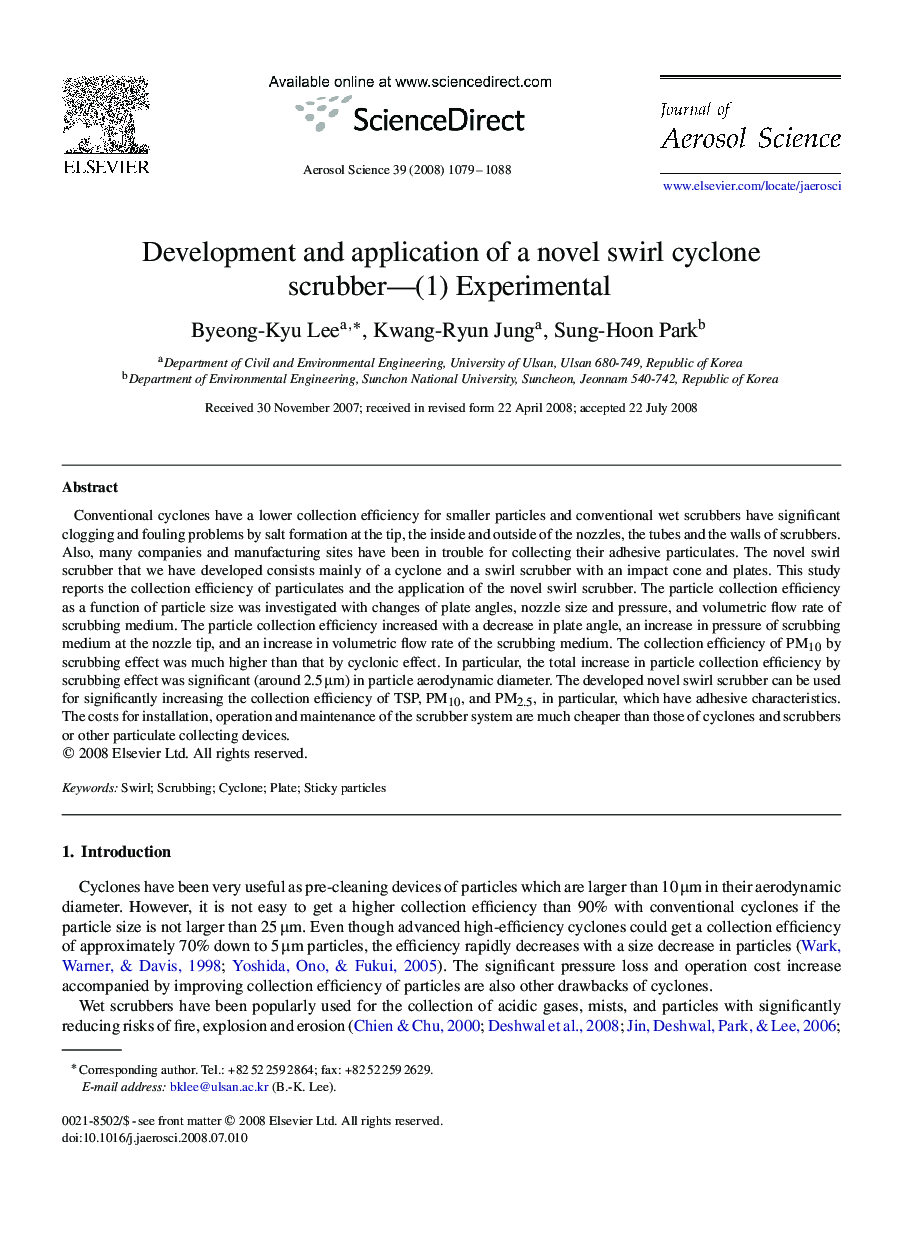| Article ID | Journal | Published Year | Pages | File Type |
|---|---|---|---|---|
| 4453004 | Journal of Aerosol Science | 2008 | 10 Pages |
Abstract
Conventional cyclones have a lower collection efficiency for smaller particles and conventional wet scrubbers have significant clogging and fouling problems by salt formation at the tip, the inside and outside of the nozzles, the tubes and the walls of scrubbers. Also, many companies and manufacturing sites have been in trouble for collecting their adhesive particulates. The novel swirl scrubber that we have developed consists mainly of a cyclone and a swirl scrubber with an impact cone and plates. This study reports the collection efficiency of particulates and the application of the novel swirl scrubber. The particle collection efficiency as a function of particle size was investigated with changes of plate angles, nozzle size and pressure, and volumetric flow rate of scrubbing medium. The particle collection efficiency increased with a decrease in plate angle, an increase in pressure of scrubbing medium at the nozzle tip, and an increase in volumetric flow rate of the scrubbing medium. The collection efficiency of PM10 by scrubbing effect was much higher than that by cyclonic effect. In particular, the total increase in particle collection efficiency by scrubbing effect was significant (around 2.5 μm) in particle aerodynamic diameter. The developed novel swirl scrubber can be used for significantly increasing the collection efficiency of TSP, PM10, and PM2.5, in particular, which have adhesive characteristics. The costs for installation, operation and maintenance of the scrubber system are much cheaper than those of cyclones and scrubbers or other particulate collecting devices.
Related Topics
Physical Sciences and Engineering
Earth and Planetary Sciences
Atmospheric Science
Authors
Byeong-Kyu Lee, Kwang-Ryun Jung, Sung-Hoon Park,
